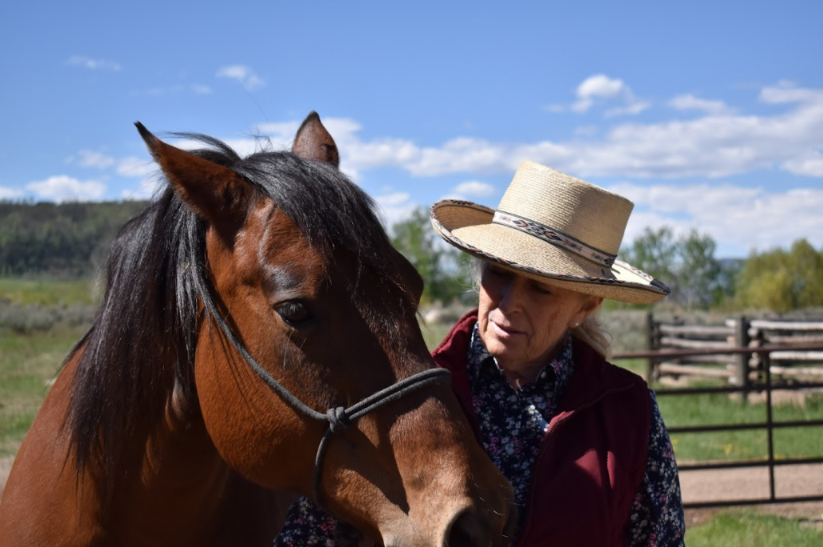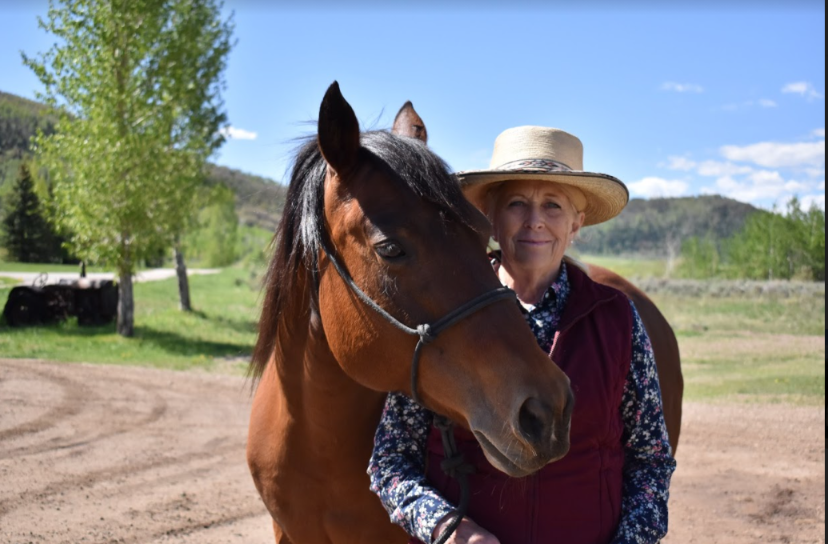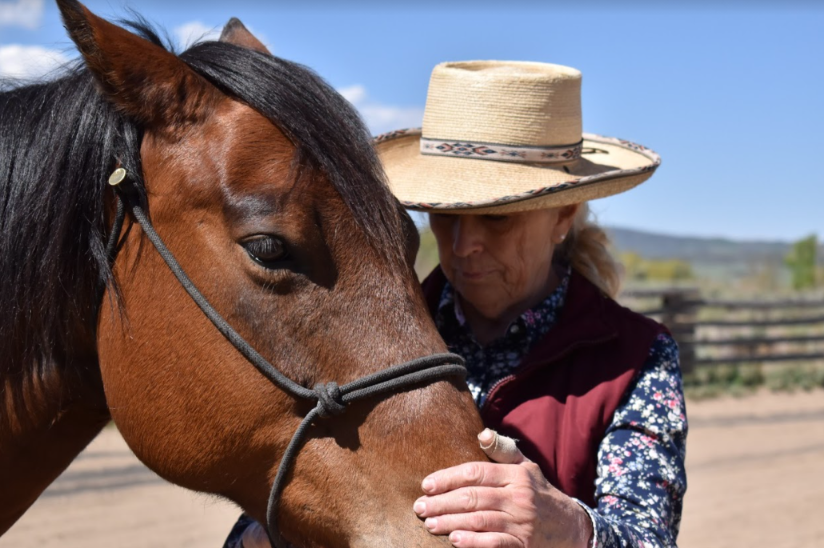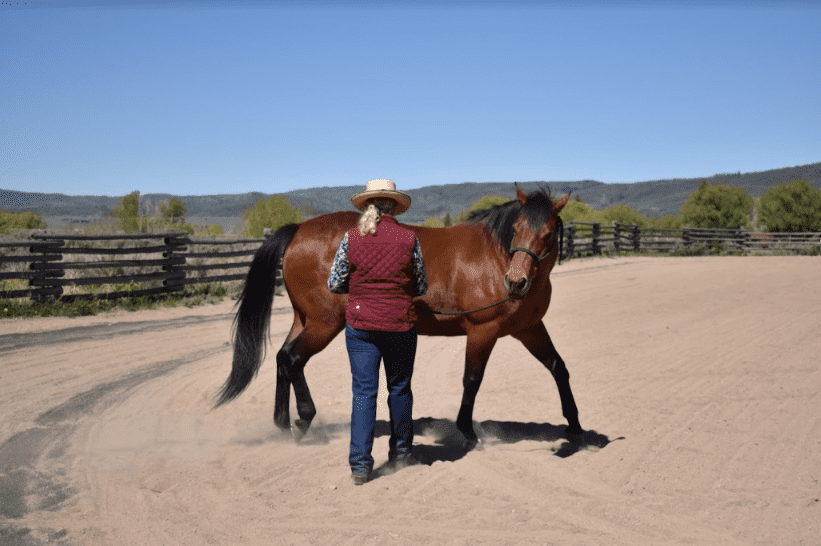The word ethos is Latin-derived, translating to the meaning of nature or disposition, defining the characteristics upholding the foundation of a community, culture, symbol, or ideology. For our use of this ancient Greek word, the characteristics of Natural Horsemanship are best suited to that of a community filled with like-minded individuals. This community encompasses not only a human species but also an equine one, creating a space where prey and predator can find even ground and benefit mutually. They provide us with their strength and an impeccable work ethic and in turn we provide shelter, food and most importantly protection for a lifelong duration. To be a part of the natural horsemanship community, one must understand the ethos behind the meaning of the word horseman, as it is someone who views the horse not as a tool for completing work, but rather a partner to gain mutuality from first forming a trusting relationship.

No one better understands this relationship than natural horsewoman Deborah Kinnett, who has spent the majority of her life studying this exact field. After a peaceful interview over a slow sunset, Deb and I took a moment to dip our toes into the deep end of the natural horsemanship pool.
Natural Horsemanship Trainer Deborah Kinnett
“It’s like a dance,” states Kinnett, with a leader taking the reins of the choreography and a partner making the work look blissful to watch. When you see a horse and rider loping off in a soft, collected form, you are paying witness to the work of a team and every team requires assigned positions. The rider takes the form of the leader of the dance, while the horse makes light work of the requested steps along the waltz.
“Somebody has to lead the dance,” says Kinnett, explaining that in order to reach a desired outcome there must be an individual taking charge. Kinnett later suggests that without this leadership, the horse is quick to take advantage of their rider, leading to what many of us have experienced as equestrians; fear and frustration.
“You have to leave your emotions out of the arena.”
Natural Horsemanship Works To Create A Relationship Built On Trust.
As humans have a great tendency to anthropomorphize many situations and most importantly animals, to which horses are no stranger. Among the many, we are one of the only species that is continuously over flooding with emotions, making sense of why we treat out pets as we do. When working with horses, we think as though they should be feeling similar to the same emotions as us. For example, if a horse was to bite at their owner, an immediate response most likely would be a slap and some rather loud words in effort to punish that unsolicited action. In that moment, whether we realize or not, there is a part of us that want that horse to feel remorse for what they did, hence the punishment for the crime. But this is where many equestrians find themselves at a crossroad, unable to move forward or back, stuck in the mud with a horse with the absence of trust.
These are the types of situations that people like Deborah try to remedy by the use of natural horsemanship. While a minor bite attempt might be a drop in the ocean when considering the various disconnects between horse and human, it exemplifies what happens when we only see a horse as a tool rather than a partner. Natural horsemanship challenges this idea every day, showing that a relationship between these species built on trust and mutual benefit can lead to greener pastures.
“It’s a relationship with a horse that can go deeper than you ever thought possible if you want to go there.”

The First Step
The first step into the realm of horsemanship requires the willingness to set aside time to truly get to know your horse, whether it be while grooming or even simply watching them in the field. You can learn a lot about a horse by observing their natural habits, allowing them to show you who they truly are. From there, this team must work on building trust, which must come from both sides.
“It’s about a balance of respect, trust, and leadership,” states Kinnett. As equestrians, we must be able to see a horse as an equal who deserves the respect of our world, and from there trust is born. This can be done by finding a common language between horse and human, and the most effective language happens to be that of the body. Horses in herds utilize body language in their everyday lives, from silently signaling nearby danger to pinning an ear out of annoyance. As with any solid relationship, whether romantic or between family, communication is key for maintaining its longevity. In horsemanship, the body is the essential form of communication that keeps the realm of compatible nature alive.
Natural Horsemanship The Method
Natural horsemanship follows the methodology of allowing the horse to solve the problem themselves, thus giving them the satisfaction of accumulating knowledge.
“It’s about helping that horse find the answer,” suggests Kinnett, further explaining this type of thinking. As horsemen, it is more effective to provide our horses with the appropriate resources and cues which they can then interpret and arrive at an outcome. While at first, they may not respond in the way we like, the principle of repetition takes power until the reward is matched with a desired action.
“A horse really learns something better if they come up with the idea themselves,” explains Kinnett.
Once the horse learns to associate this newfound action with the reward, they are able to add it to their ever-accumulating knowledge, further building compatibility within that relationship.
Natural Horsemanship from a human perspective, what are we really getting out of this entire experience?

As equestrians, natural horsemanship has the potential to teach us the many values and virtues of life. When we take the time to better understand our horses, we are practicing the virtue of patience. When we set aside our predatory and anthropomorphic tendencies, we are collecting the virtue of empathy and the value of good teamwork. Most importantly, by using our body to talk to our horses, we are relearning how the value of communication is a vital component to any relationship.
“You have to develop self-discipline,” states Kinnett, further showing that the practice of natural horsemanship yields exponential benefits for both human and horse.
“It’s Like a Dance, The Rider Takes the form of the Leader of the Dance, while the Horse Makes Light Work of the Requested Steps along the Waltz.”
Natural Horsemanship Trainer Deborah Kinnett
To continue the foundation of a strong working relationship, natural horsemanship can be utilized in almost every human-to-equine interaction. Even catching your horse for that early morning practice, can yield an opportunity to check back in with each other to ensure mutual understanding.

“It’s a lifestyle,” as Kinnett would say, who has dedicated a lifetime to working with horses and people to help make deeper and lasting connections. Inspired by the extraordinary work of mentors such as Buck Brannaman, Ray Hunt and Tom Dorrence, Kinnett’s work has been able to reach the hearts of many as her quest to build stronger connections continues to grow.
This article by Jordan Bastian was originally published in the June 2021 Issue of Irish Sport Horse Magazine. All Pictures are used by kind permission of Jordan Bastian.
